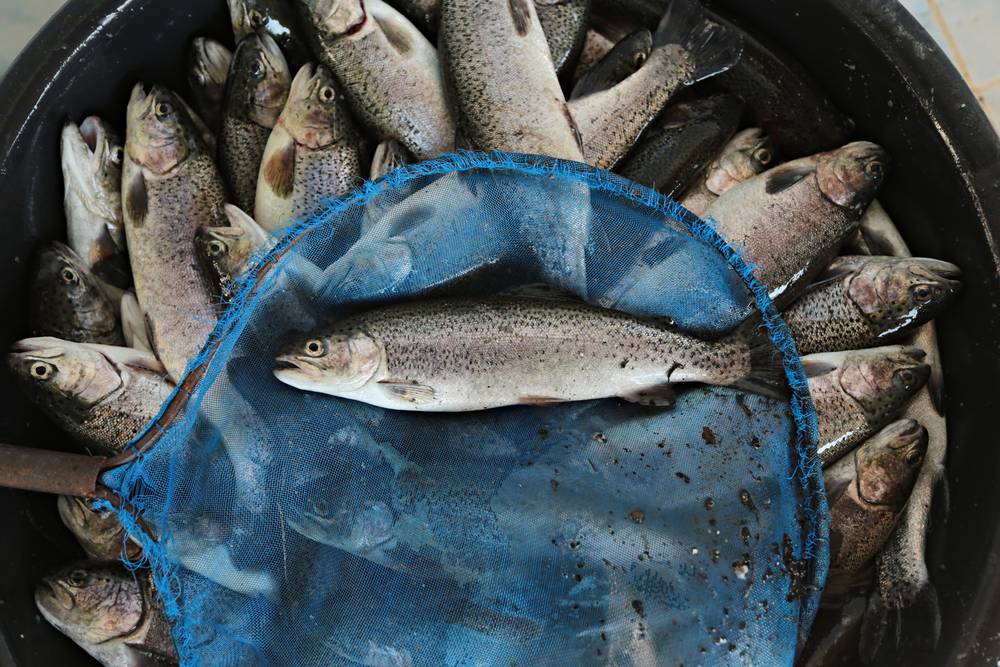 Last updated: July 6th, 2019 2:22 AM
Last updated: July 6th, 2019 2:22 AM
Blue Revolution
Blue Revolution, also called by the name Neel Kranti Mission is aimed at enhancing the economic prosperity of the country by augmenting fisheries, fish farmers and contribute towards food and nutritional security. The mission utilizes water resources for fisheries development in a sustainable manner, considering the bio-security and environmental concerns. In this article, let us take a brief look at the mission.Objectives
The objectives of Blue Revolution are as follows.- To completely tap the fish potential in the country both in the island and the marine sector and triple the production by 2020.
- To transform the fisheries sector into a modern industry, by utilising new technologies and processes.
- To double the income of the fishers by increasing productivity and better marketing post-harvest infrastructure that includes e-commerce, technologies and global best innovators.
- To enable participation of the fishers and fish farmers in income enhancement.
- To triple the export earnings by 2020, by focusing on the benefits that cover institutional mechanisms in the producer, cooperative companies and other structures.
- To develop food and nutritional security across the nation.
Vision
To create an enabling environment for integrated development with the full potential of fisheries across the country. Moreover, the mission works for the improvement of the income status of fisheries and fish farmers, considering the bio-security and environmental requirement.Mission Duration
Blue Revolution, developed by the Integrated Development and Management of Fisheries, has approved a total central outlay of Rs. 3000 crore for the implementation of the mission. The duration of the scheme is from 2015-16 to 2019-20.Components
The Ministry of Agriculture and Farmers Welfare, Department of Animal Husbandry, Dairying and Fisheries has merged all the schemes into this mission. The scheme focuses on the development and management of fisheries that include deep sea fishing, mariculture and all activities that are conducted by the National Fisheries Development Board (NFDB). Below given are the components of the Blue Revolution.- National Fisheries Development Board (NFDB)
- Development of Infrastructure, Marine Fisheries and Post-Harvest Operations
- Monitoring, Control and Surveillance (MCS) and other required interventions
- Development of Inland Fisheries and Aquaculture
- Strengthening of Database and Geographical Information System of the Fisheries Sector
- Institutional arrangement for the fisheries sector
- National Scheme of Welfare of Fishermen
Matsya Sampada Yojana
Matsya Samapada Yojana was announced by the Finance Minister Nirmala Sitharaman during the Financial Budget 2019-20. The Government aims to promote aquaculture to benefit all fishermen with social security and to expand the coverage for accident insurance.Central Financial Assistance
Board patterns of central funding for new projects are made under four components namely National Fisheries Development Board (NFDB), Infrastructure and Post-Harvest Operations, Development of Inland Fisheries and Aquaculture, Development of Marine Fisheries and National Scheme on Welfare of Fisherman. The assistance provided by the above-mentioned departments is listed below.- 50% of the project or unit cost would be provided for general States, and the rest would be funded by the State agencies or organization, corporation, boards, federations, private entrepreneurs, fisheries cooperatives and individual beneficiaries.
- 80% of the project or unit cost would be provided for North-Eastern/Hilly States, and the rest would be funded by State agencies or organisations, cooperatives, individual beneficiaries etc.
- 100% for projects that are directly implemented by the Government of India through its institutes/organizations and Union Territories.
Implementing Agencies
Blue Revolution would be implemented through the following agencies.- Central Government, Central Government Institutes/Agencies, ICAR, NFDB institutes, etc
- State Governments and Union Territories
- State Government agencies, organizations, corporations, boards, federations, panchayats and local urban bodies
- Fisher's cooperatives or registered fishers bodies
- Individual beneficiaries or fishers, entrepreneurs, Scheduled Castes (SCs), Scheduled Tribes (STs) groups, women and their co-operatives, SHGs and fish farmers and miscellaneous fisherman bodies.
Strategies Adopted
There are three main strategies that are adopted by the mission.- Species diversity
- Technology adoption
- Dissemination
Development Strategies
The following development strategies have been implemented by the mission.- Creation of infrastructure-Broadstock Multiplication Centres, Aquatic Quarantine Facilities, Hatcheries, Seed rearing space for Fingerling Production and Feed Mills.
- Setting up Aquatic Animal Health and Environmental management laboratories in farming areas.
- Restore the health of natural ecosystems.
- Commercialization of rainbow trout aquaculture in raceways.
- Import of quality germplasm of rainbow trout to increase productivity.
- Quality broodstock development, the emphasis of captive breeding of indigenous ornamental fish species.
- Promote captive breeding and production of marine ornamental species.
- Introduction of the intermediate craft of improved design.
- Promote fuel efficient, and environmentally friendly fishing practises.
- Upgradation of existing fishing vessels.
- Promotion of Mariculture that focuses on candidate species like Pornpano, Cobia, and Sea Bass for open sea cage culture.
- Incorporate women gracious particularly bi-valve, pearl and seaweed culture.
- Onboard training of fishers in deep-sea Tuna catching and handling.
- Financial assistance for procurement of deep-sea fishing vessels.
- Setting up fishing harbours and fish landing centres.
- Creation of modern hygienic fish markets.
- Micro and Small marketing infrastructure support for employment.
- Creation of basic amenities like housing, drinking water and community halls for fisherman.
- Provide insurance coverage to fishermen who have engaged actively in fishing.
- Provide relief to fishermen during the lean fishing season.
- Training, skill development and capacity building.
- Fisheries and Aquaculture Infrastructure Development Fund (FIDF).
Popular Post

In the digital age, the convenience of accessing important documents online has become a necessity...

The Atalji Janasnehi Kendra Project that has been launched by the Government of Karnataka...

The Indian Divorce Act governs divorce among the Christian couples in India. Divorce...

When an individual has more than a single PAN card, it may lead to that person being heavily penalised, or worse,...

Employees Provident Fund (PF) is social security and savings scheme for employee in India. Employers engaged...


